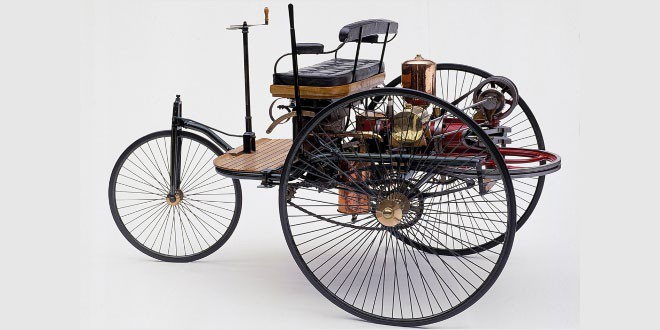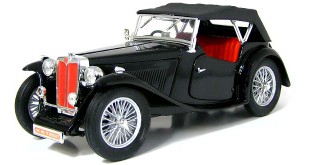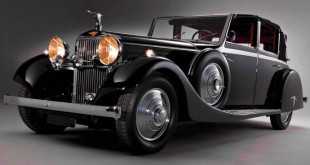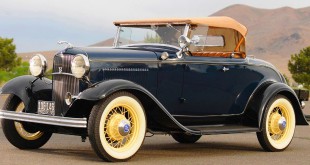Karl Benz — 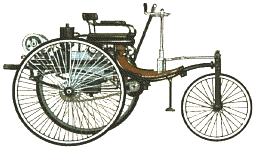 The first automobile was built by Karl Benz (1886; Germany). A one-cylinder internal-combustion engine propelled this three-wheeler at 13 km/h (8 mph).
The first automobile was built by Karl Benz (1886; Germany). A one-cylinder internal-combustion engine propelled this three-wheeler at 13 km/h (8 mph).
Karl Friedrich Benz, for whom an alternate French spelling of Carl is used occasionally, (November 25, 1844, Karlsruhe, Germany – April 4, 1929, Ladenburg, Germany) was a German engine designer and mechanical engineer, generally regarded as the inventor of the gasoline-powered automobile. Other German contemporaries, Gottlieb Daimler and Wilhelm Maybach, also worked independently on the same type of invention, but Benz patented his work first and, after that, patented all of the processes that made the internal combustion engine feasible for use in automobiles. In 1879 Benz was granted a patent for his first engine, which he designed in 1878.
In 1885, Benz created the Motorwagen, the first commercial automobile. It was powered by a four-stroke gasoline engine, which was his own design. He was granted a patent for his automobile which was dated January 29, 1886. The automobile had three wheels, being steered by the front wheel and with the passengers and the engine being supported by the two wheels in the rear—some now refer to it as the Tri-Car.Among other things, he invented the speed regulation system known also as an accelerator, ignition using sparks from a battery, the spark plug, the clutch, the gear shift, the water radiator, and the carburetor.In 1893, Benz also introduced the axle-pivot steering system in his Victoria model. The Benz Victoria was designed for two passengers and intended to be sold for a lower cost to encourage mass production of the automobile.In 1896, Karl Benz designed and patented the first internal combustion flat engine with horizontally-opposed pistons, a design that is still used in some high performance engines used in racing cars.
Benz’s lifelong hobby brought him to a bicycle repair shop in Mannheim owned by Max Rose and Friedrich Wilhelm Eßlinger. In 1883, the three founded a new company producing industrial machines: Benz & Company Rheinische Gasmotoren-Fabrik, usually referred to as, Benz & Cie. Quickly growing to twenty-five employees, it soon began to produce gas engines as well.The company gave Benz the opportunity to indulge in his old passion of designing a horseless carriage. Based on his experience with, and fondness for, bicycles, he used similar technology when he created an automobile with a four-stroke engine of his own design between the rear wheels. Power was transmitted by means of two roller chains to the rear axle. Karl Benz finished his creation in 1885 and named it the Benz Patent Motorwagen. It was the first automobile entirely designed as such, not simply a motorized carriage, which is why Karl Benz is regarded by many as the inventor of the automobile.
The beginnings of the Motorwagen in 1885 were less than spectacular. The tests often attracted many onlookers who laughed mockingly when it smashed against a wall because it initially was so difficult to control. The Motorwagen was patented on January 29, 1886 as DRP-37435: “automobile fueled by gas”. The first successful tests were carried out in the early summer of 1886 on public roads. The next year Benz created the Motorwagen Model 2 which had several modifications, and in 1887, the definitive Model 3 with wooden wheels was introduced.
Benz began to sell the vehicle—advertising it as the Benz Patent Motorwagen-making it the first commercially available automobile in history. The first customer, in late summer of 1888, is alleged later to have been committed to an insane asylum. The second buyer, the Parisian Emile Roger, who purchased an 1888 Benz, had a profound effect on Benz’s success. Roger had been building Benz engines under a license from Karl Benz for several years, and in 1888, decided to add his automobiles to the line. Many of the early Benz automobiles were indeed built in France and sold by Roger, since the Parisians were more inclined to purchase automobiles at the time.
Early customers faced significant problems. At the time, gasoline was available only from pharmacies that sold it as a cleaning product, and they didn’t stock it in large quantities. The early-1888 version of the Motorwagen had to be pushed when driving up a steep hill. This limitation was rectified after Berta Benz made her famous trip driving one of the vehicles a great distance and suggested to her husband the addition of another gear. The popular story goes that, on the morning of August 5, 1888, Berta Benz took this vehicle (without the knowledge of her husband), and embarked on a 106 km (65 miles) trip from Mannheim to Pforzheim to visit her mother, taking her sons Eugen and Richard with her. In addition to having to locate fuel at pharmacies on the way, she also overcame various technical and mechanical problems and finally arrived at nightfall, announcing the achievement to Karl Benz by telegram. Today the event is celebrated annually in Germany with an antique automobile rally. Benz’s Model 3 made its wide-scale debut to the world in the 1889 World’s Fair in Paris, and about twenty-five Motorwagens were built during the period between 1886 and 1893.
 Kids Portal For Parents India Kids Network
Kids Portal For Parents India Kids Network
